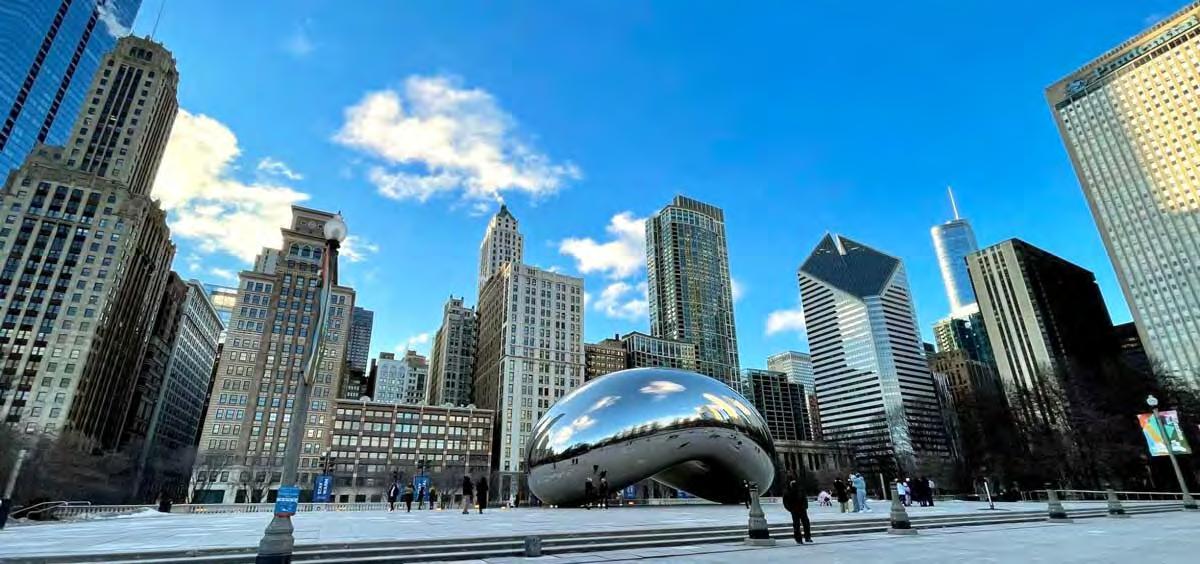INTERNATIONALRETAIL









Letter from our publisher Linda Johansen-James
Welcome Letter from editor Shannon Quilty
What is really going on at the Retail Industry’s hottest event?
From Home-Based Business to Household Name
Javier Brown, President of O2J, Inc., helps businesses fulfill their dreams
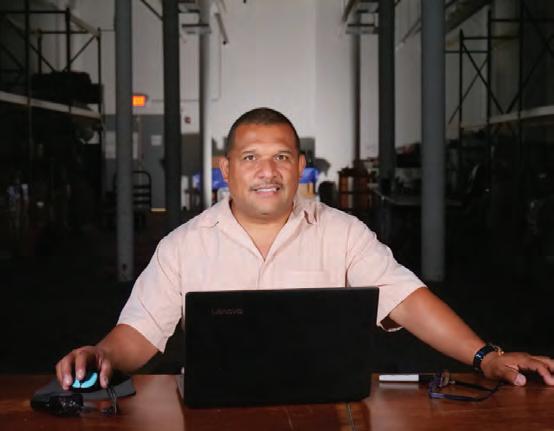
The Best Of Times


Our Global Voice of Retail, Chris Igwe, returns with an astounding take from 30+ years in Retail
Ben Chesser, Founder and CEO of Coniq schools us on the coming technological revolution in Customer Loyalty Programs
Excellence starts with Excellent People
Melissa Moore shares her experience with hiring the right people
COVER STORY:
The Evolution of Destination Retail
Lisa Wagner knows what it takes to build an exemplary Outlet Center experience
When local municipalities support local businesses: Greg Parsons prepares us for a world of possibilities
Greg Kirsch, founder of Chicago based Kirsch Agency, sets out on a journey of a lifetime


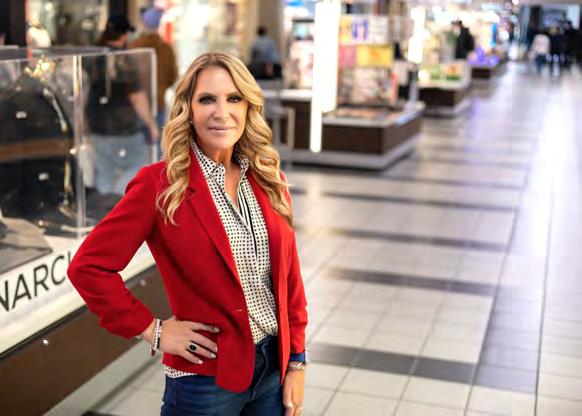
As the publisher of International Retail Magazine, a leading voice in the retail industry, I am continually inspired by the dynamic nature of retail environments, especially outlet centers. These unique shopping venues have evolved significantly, offering more than just a means to purchase goods at reduced prices. They represent a pivotal aspect of the customer's journey, a journey we are committed to exploring and celebrating in our publication.
Outlet centers have transformed into destinations that offer a comprehensive and immersive shopping experience. They now incorporate a variety of services, amenities, and entertainment options, catering to a wide range of consumer needs and preferences. This evolution underscores the importance of understanding and enhancing the customer's journey. From the moment a customer decides to visit an outlet center, to the interactions they have with brands and the memories they take away, every touchpoint is an opportunity to make a lasting impression.
In this issue, we delve deeper into the strategies that successful outlet centers employ to enrich the customer's journey. We explore how innovation in retail design, customer service excellence, and digital integration are setting new standards for the shopping experience. Our aim is to provide you, our readers, with insightful analysis and actionable advice to help you adapt and thrive in this ever-changing landscape.
We believe that the future of retail lies in understanding and prioritizing the customer's journey. As such, we are excited to embark on this exploration together, sharing the latest trends, stories of success, and lessons learned from across the globe.
Proper warehousing plays a pivotal role in the success of retail operations, an aspect often overlooked by those outside the industry. At its core, warehousing is not just about storing products but about optimizing the entire supply chain to ensure that products are available when and where they are needed, in the right condition and at the right time. This efficiency directly impacts customer satisfaction, inventory management, and ultimately, the profitability of a retail business. You will hear from an expert on why warehousing, fulfillment and packaging is a strategic element of retail success.
Thank you for your continued support of International Retail Magazine. We look forward to providing you with valuable content that empowers and informs your decisions in the vibrant world of retail.
Warm regards,
Linda Linda Johansen-James Publisher, International Retail MagazineContact us to advertise and/or be featured in future publications: ljohansen-james@irg-retail.com
Subscribe at: www.irg-retail.com






In this edition, we were excited to speak with Ben Chesser to learn more about how his company, Coniq, is using technology to engage customers and build loyalty to shopping centers and brands. Ben explains how their loyalty programs work and what we can expect to see as the industry and the technology evolve.
Our Publisher, Linda Johansen-James, attended Shoptalk’s Las Vegas event discovering a bustling hub of retail activity. The days were abuzz with insightful discussions, relationship building, and sharing of innovative ideas and solutions In this issue’s One Question segment, Linda asked ShopTalk attendees and exhibitors why they attend and what they hope to achieve by doing so.
For retailers, warehouses, packaging facilities, and fulfillment centers play a crucial role in ensuring their products reach the hands of customers. Javier Brown and his team at O2J, Inc., are committed to helping retailers of all sizes, in achieving precisely that. Javier’s journey is an inspiring story of resilience, problem-solving, and a steadfast dedication to exceptional customer service.
At its core, our industry revolves around people. Chris Igwe underscores the impact of nurturing relationships over time, which leads to both personal and professional success.
Meanwhile, Melissa Moore, The Retail Advisor and host of The Retail Tea Break, emphasizes that happy and empowered teams play a pivotal role in driving the success of any retail business.
The COVID-19 pandemic has undeniably reshaped our world, and one of its enduring effects lies in the transformation of work patterns. No longer are cities the sole epicenters of our lives from Monday to Friday. Consequently, the once bustling and dynamic retail high streets now face significant challenges in their survival.
In this edition of Power of Pop-Ups, Greg Parsons sheds light on how certain cities are actively striving to revive the vibrancy of their retail spaces and reigniting the spirit of commerce.
In our Pivot column, Greg Kirsch, a prominent figure in Chicago’s tenant representation scene, takes an existential leap. Transitioning from worker to owner, he establishes Kirsch Agency, signaling an elevated commitment to his clients and to himself.
Finally, we are thrilled to showcase Lisa Wagner, Founder of The Outlet Resource Group (TORG), in this issue’s featured interview. Lisa stands as one of the global pioneers in the Outlet Retail space. Her impact on the industry has been profound, and she continues to shape its future. With a wealth of experience and a deep understanding of the factors driving outlet retail success, Lisa’s insights promise an engaging and enlightening read.
I hope you find this issue of International Retail Magazine as interesting to read as I found it to write and edit.
Have a great summer!
Contact us to advertise and/or be featured in future publications: ljohansen-james@irg-retail.com. Subscribe at: www.irg-retail.com
Shannon Quilty Editor, International Retail Magazine


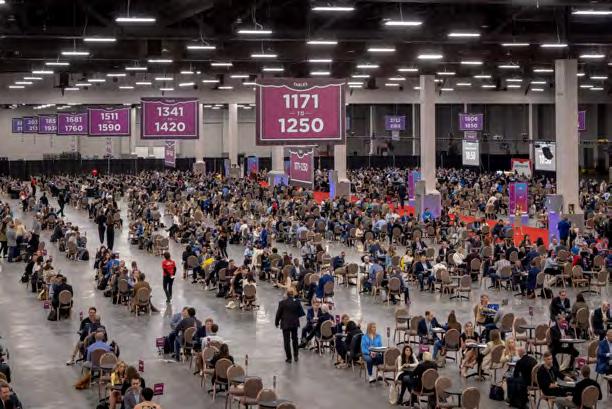


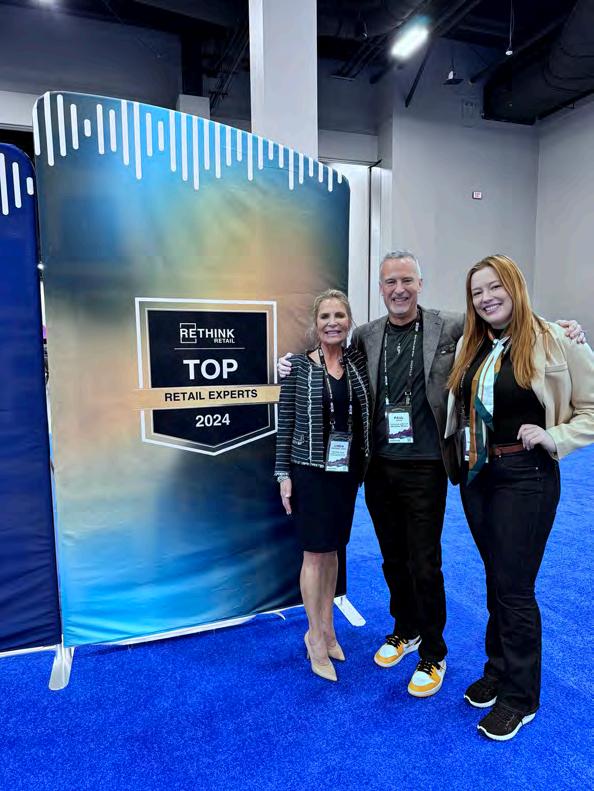
The retail industry is a constantly evolving landscape, brimming with conferences and expos that aim to shed light on the latest trends and technologies.
However, amidst the sea of events, ShopTalk stands out as a must-attend conference for anyone looking to stay at the forefront of retail innovation.
Representing International Retail Magazine, my experience at ShopTalk was nothing short of enlightening, offering a unique glimpse into the future of retail through engaging panel discussions and networking opportunities. The media room served as a hub for meeting influential figures and diving into conversations that could reshape the way we think about retail.
One of the most riveting discussions involved a panel of Gen Z participants who emphasized the importance of community, experience, and customization in the shopping process. Their insights are a wake-up call for retailers; to attract and retain this demographic, brands must offer more than just products - they need to provide immersive, personalized experiences. Additionally, the concept of Unified Commerce was highlighted as the evolution of Omni-Channel retailing, stressing the significance of a holistic brand experience. This approach is instrumental in meeting the ever-evolving customer expectations, where personalization extends beyond transactions to empathetic connections between brands and consumers.
The influence of technology, particularly Generative AI, was another hot topic. A breakfast session powered by Meta explored whether Artificial Intelligence in retail is overhyped, under-hyped,

or appropriately hyped, concluding that its current impact is just right, yet its future potential remains vast. This sentiment underscores the necessity for continuous exploration and innovation in utilizing AI not just for efficiency, but for enhancing human potential within the retail space. Furthermore, insights from a Gen Z study conducted with The Z Suite reveal that this demographic turns to social media platforms like TikTok for product discovery, valuing peer reviews and concise content over traditional search engines.
As we look towards the future, it is clear that the retail industry is set for further transformation. Brands that succeed will be those that listen actively, forge strategic partnerships, and invest in innovative strategies that resonate with today's educated and empowered consumers. Shopping has transcended mere transactions, evolving into an experience that demands convenience, education, and wonder. With the baseline continually rising, 2024 promises to be
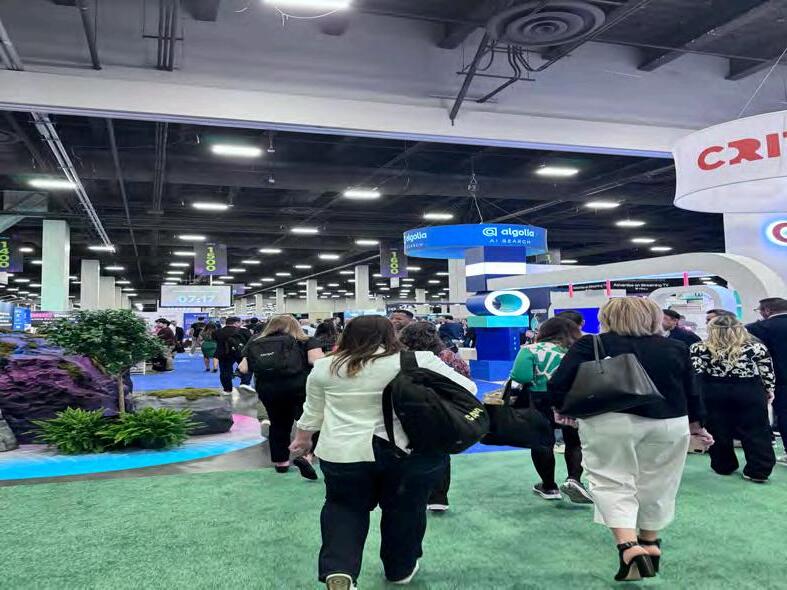
a year of significant evolution for retailers willing to adapt and embrace these emerging trends.
Below you will hear from some industry experts on the benefits they received from attending ShopTalk. Thank you for your feedback! It was great to meet you all and get to know you.
One of the greatest benefits of ShopTalk for me was networking. The connections I made were unbelievably valuable from a business and personal perspective.
RETHINK Retail was the place to be for networking and valuable discussions with retail experts and authors. Julie and Paul and the RETHINK Retail team outdid themselves.
I cannot thank you enough for facilitating such great networking events and oneon-one industry discussions. The time you spent with me is deeply appreciated.
 Linda Johansen-James, CRX, CLS Founder/CEO International Retail Group, LLC
Linda Johansen-James, CRX, CLS Founder/CEO International Retail Group, LLC


Hearing the developments on how AI is changing the face of retail, both internally and externally, is thrilling as I hope to see increased efficiency and inspiring innovations building the stage for a new era of business. The combining of minds at Shoptalk between generations, company sizes, and industries are a melting pot for the metamorphosis of retail seen in a post-pandemic and pre-automated age of commerce.
“I think the benefits of ShopTalk include:

1) Talks, insights and solutions from the best in the industry
2) The ability to network and catch up with colleagues
3) A professionally run event with the right mix of entertainment
 Paul Lewis Managing Director
Paul Lewis Managing Director

Shoptalk is a conference that has the ability to match retailers with solutions that can help them immediately. I find many conferences that I attend with retail leaders in my network can feel overwhelming and far-reaching in terms of technology. They need help now and Shoptalk gives them a good “assortment" of solution providers and relevant content. It doesn’t feel as overwhelming and I love that about Shoptalk. I also love the fact that Shoptalk supports non-profits like WOCRA, Women of Color Retail Alliance, and Women In Retail Leadership Circle. It’s not just about the tech or the solution provider. It’s about retail as a community.
 Liza Amlani Principal and Founder Retail Strategy Group
Liza Amlani Principal and Founder Retail Strategy Group
I attended ShopTalk to to help retailers grow their career through my book, Retail Leaders Roadmap, and to build relationships with vendors bene book signing thanks to the team at RETHINK Retail and I saw my best Amazon sales over the week since the



ShopTalk's four-day event stands as a unique stage for our vast retail community, offering an unparalleled chance to connect face-to-face. It's here we delve into our collective priorities, celebrate our successes, and tackle our challenges, all while strengthening our sense of unity.
I cherish this opportunity to come together as one vibrant community!
The retail world is filled with brilliant, entrepreneurial minds steering complex, multichannel businesses. To keep our industry vibrant and successful, it's crucial we share insights, collaborate on challenges, and celebrate our wins. ShopTalk offers the perfect platform for this exchange, fostering growth and unity among us all.
 Ron Thurston Co-Founder
Ron Thurston Co-Founder


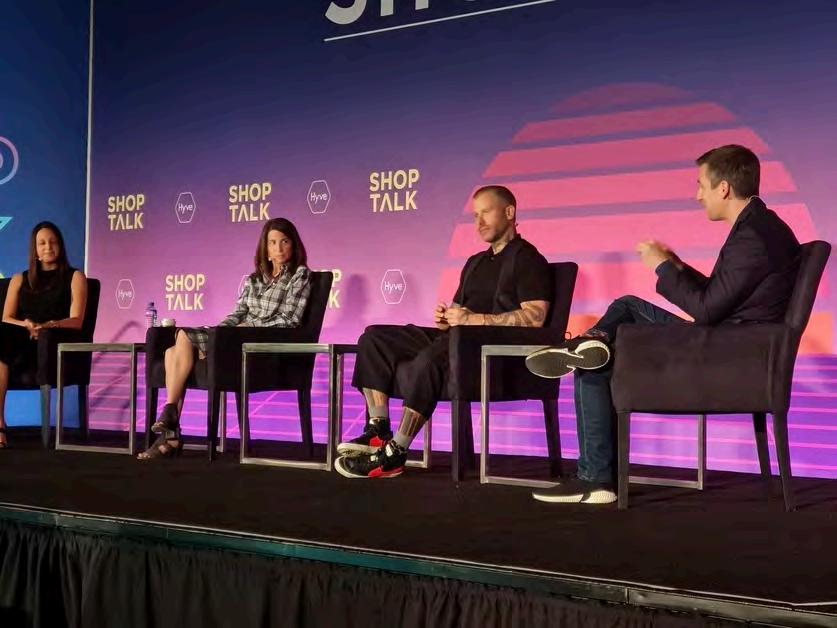


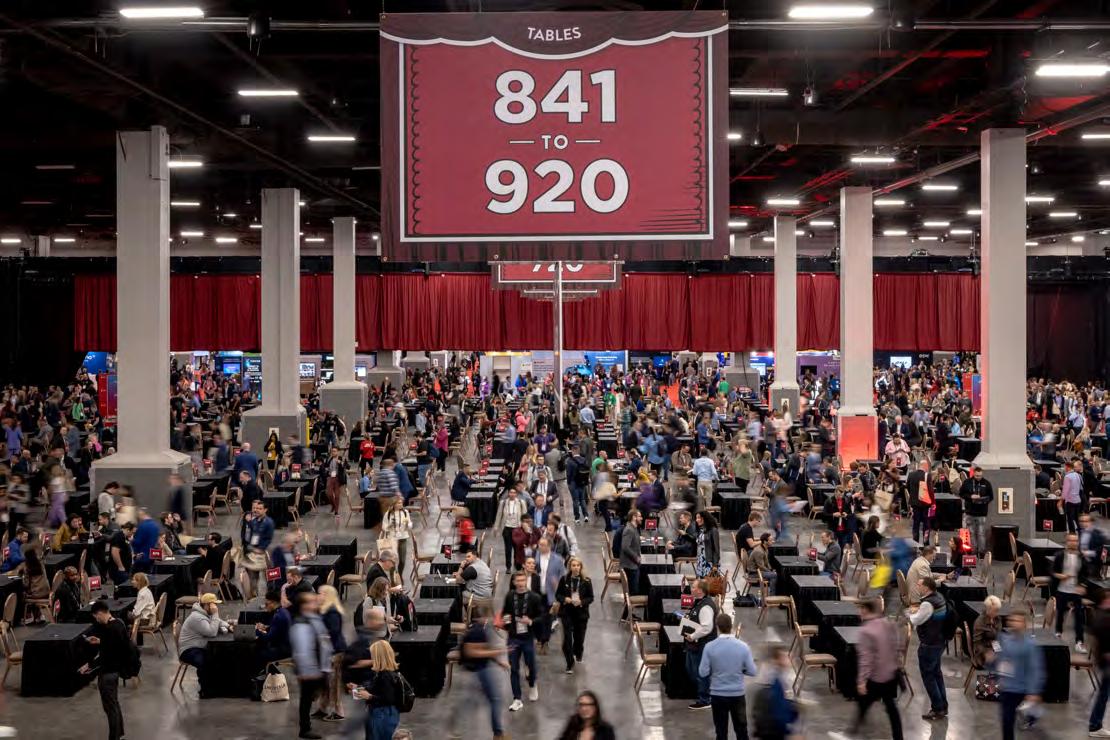



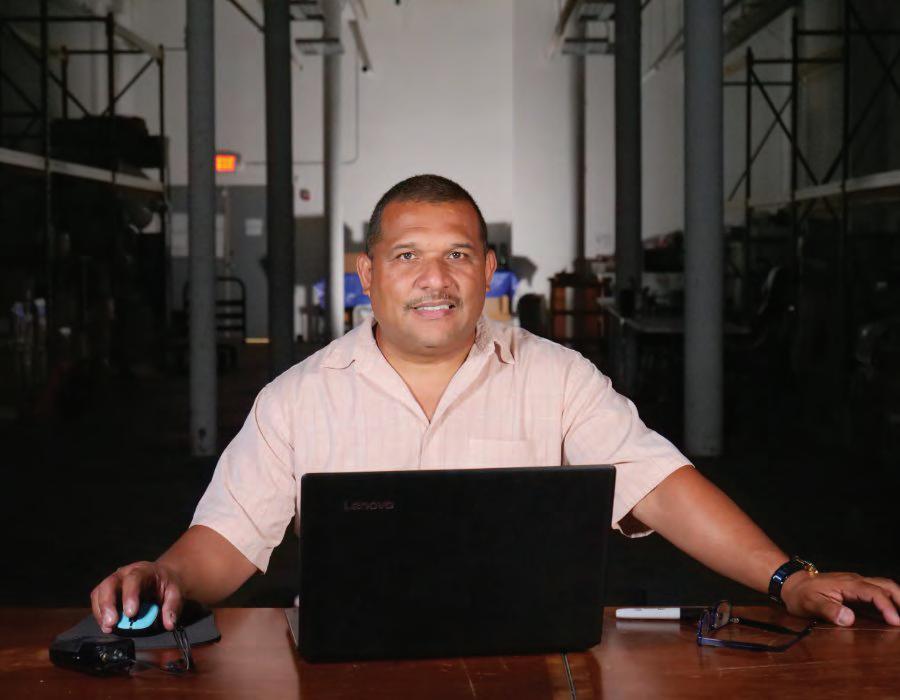
Javier Brown’s story is one of entrepreneurial spirit. Born in Venezuela, he arrived in the United States over two decades ago, seeking opportunities. Though his educational background was as an engineer, language barriers and family responsibilities meant a shift in focus.
He joined his siblings in their jewelry packaging company, immersing himself in learning the business as well as the nuances of the economy.
When the Great Recession hit, the jewelry packaging business waned. Javier faced a crossroads. Instead of surrendering, he embraced change and established O2J, Inc., a packaging company based in Rhode Island, USA. A former customer beckoned - a transition to sporting goods and promotional products. The challenge?
Designing golf ball packaging that resembled miniature cars and



network, burning the midnight oil to meet the deadline. The client, Parson Kellogg, became a pivotal partner.
As the packaging business diversified, Javier persevered, building his reputation as a strong and reliable partner. Then came the pandemic - a seismic shock that threatened livelihoods. But Javier, fueled by resilience, saw opportunity. The pandemic accelerated online shopping, and Javier seized the moment.

Fulfillment services, essential for e-commerce companies both small and large, became his focus. The business thrived, bridging the gap between manufacturers/ entrepreneurs and consumers.
Javier’s journey embodies the entrepreneurial principles: adaptability, data-driven decisions, and seizing unexpected opportunities. His focus on providing solutions and his relationship-centric approach is the cornerstone of his business. Javier and his team have been integral in the success of many small businesses.
O2J, Inc, is now multi-pronged – it includes warehousing, pick & pack, distribution, fulfillment, and the new division, return logistics, handling the return of products bought on-line.
His full-service operation is clearly a great service for businesses of all sizes but most especially it allows entrepreneurs to grow their business by focusing on what they’re passionate about – their product –while his company makes sure it gets to the customer as promised and with the care in packaging that reflects the brand.
From Home-Based Business to Household name
How to grow from a home-based business to a household name is likely one of the bigger challenges facing many of today’s entrepreneurs. Javier was kind enough to walk me through the ways OJ2 support and assist those ready to take on more business than their kitchen tables and garages can sustain. To begin, it’s important to understand how businesses like Javier’s work.
Prior to Amazon becoming an integral part of life for both retailers and customers, it was a catalog world. How many remember the Sears Catalog of yore? I remember eagerly awaiting the arrival of that mammoth book of dreams. My sisters and I would sit down to peruse and circle all the gifts we wanted for our birthdays and Christmas. You could
find everything! (I was also fairly sure this was where babies came from but that’s a different story.)
Now, more often than not, we sit solo behind our computer screens or staring down at our phones as we scroll through websites of all types to find what we need, want or desire.
Once we click that button to buy, we set in motion a process that typically involves an intricate network of fulfillment centers.
Algorithms optimize routes, minimizing delivery times. It’s a symphony of logistics, powered by data and precision.
Here’s how it unfolds:
1. Order Processing:
The moment you click “Buy,” the clock starts ticking. Your order data; product details, shipping address, and payment information, flows seamlessly to the fulfillment center.
2. Inventory Management:
Fulfillment centers house vast inventories. They track stock levels, ensuring that your desired item is available. If not, they reorder from suppliers.
3. Picking and Packing:
This is where the magic happens. Staff (or sometimes robots) locate your item, pick it from the shelves, and pack it securely. Efficiency is key - speedy pickers mean faster deliveries.
Oftentimes, the fulfillment center also provides the packaging. No longer is it about cardboard boxes and bubble wrap. It’s an art forma silent storyteller.
4. Shipping and Logistics:
The packed parcel embarks on its journey. Fulfillment centers collaborate with carriers (think FedEx, UPS, or the trusty mail carrier) to whisk your package to your doorstep.
5. Returns Management:
Not every love-at-first-sight purchase stays that way. Fulfillment centers handle returns, inspecting items, restocking, or processing refunds.
Here’s why it matters:
1. Protection:
Packaging shields products from the rough-and-tumble of transit. Whether it’s delicate glassware or rugged power tools, the right packaging ensures safe arrival.
2. Branding:
Ever unboxed an Apple product?
The minimalist white box, the satisfying pull… it’s an experience! Packaging is a canvas for branding. Colors, fonts, and design speak volumes.
3. Sustainability:
In an eco-conscious world, packaging must tread lightly. Biodegradable materials, minimalist designs, and reusable options are gaining ground.
Packaging isn’t one-size-fits-all. Imagine receiving a luxury watch in a plain brown box - it just wouldn’t feel right. Custom packaging adds value. Think embossed logos, personalized notes, or themed designs for special occasions.
Remember the anticipation as you peeled open a gift? Unboxing is an event. Brands invest in creating memorable unboxing experiences. From clever inserts to scented tissue paper, it’s all part of the show. The brand owner provides the product, the materials and instructions for packaging and the fulfillment center does the rest.
Javier has been integral in the success of many small businesses. His full-service operation is clearly a great service for businesses of all sizes but most especially it allows entrepreneurs to grow their business by focusing on what they’re passionate about – their product –while his company makes sure it gets to the customer as promised and with the care in packaging that reflects the product.
To learn more about how OJ2 can help your business, visit www.o2jinc.com or email O2Jincpackaging@gmail.com




years in the retail industry. “It was the best of times, it was the worst of times, it was the age of wisdom, it was the age of foolishness, it was the epoch of belief, it was the epoch of incredulity, it was the season of light, it was the season of darkness, it was the spring of hope, it was the winter of despair”.
I would like to think that I have seen it all in global retail, from my early beginnings in the industry as Head of Real Estate Europe for Foot Locker, based in The Netherlands, and then for Gap, based in Paris. Retailers were expanding. We were in high demand as tenants, and rather like the queen at the gala, we were wined, dined, and seduced. I discovered that Europe is a wonderful mosaic of languages, cultures, wonderful food, and also unique business habits. For American brands where we liked to minimize the conversation and get to the essentials of striking a deal, we had to learn to walk
deals. It was a balancing act between the internal corporate expectations around speed and the market dynamics where things take time.
We were living our best life, with many new shopping centres being built across Europe, some countries more than others. About 15 years ago, I pointed out that the race for space was over and that retailers and brands had to be more cautious and pragmatic about their real estate acquisitions, in order to protect the integrity of the brand by not over-expanding, given the rising costs of real estate deals, especially in the large dominant markets such as Paris, London, Milan, Munich, or Barcelona, reaching record highs, whether in the mass, premium or luxury streets.
I have been able to do some of the most highly sought after deals across Europe, often competing against arch-rivals, later friends, also hungry for prime real estate.

I learnt early on, thanks to a great mentor, the late Founder and Chairman of Gap, Don Fisher, that the best deals you do are the bad deals you don’t do. He shared his vast wisdom on structuring deals never losing sight of focusing on the needs of the brand, and not those of the landlord, while being sensitive to the latter.
When I moved into founding my own company, Chris Igwe International, to advise retailers and brands, it became even more important to be able to navigate skillfully the expectations of my retail clients and those of the landlord to secure a deal. Beyond expansion, the key in the past few years, was to obtain new terms and conditions, or exit stores. Once again, the approach is not the same across all markets, especially considering the individuals you have in front of you and his or her personal objectives in their own company.
It has been a very rich experience requiring the use of all the faculties from negotiation to deep listening with an acute sense of awareness, being able to anticipate what might go wrong, despite the best laid plans. When the CEO of a global brand phones you up at 8pm on a Friday night to remind you not to lose a deal you are working on, there is very little margin for error, not to mention a ruined weekend thanks to that call!
Beyond all these successes, the greatest moments are those where together, the magic was in the pleasure of being able to acknowledge that we did it together, as a team, despite some very tough and frank conversations.
I have often been asked which deals have the best memories for me. After 30 years, there are so many.
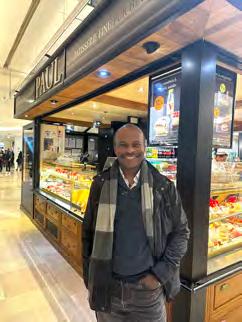
However, I take great pride in my baptism by fire that helped Foot Locker reposition itself across its 8 markets in Europe and 220 stores, creating the future strategy for growth, or helping Gap gain traction in its 3 markets of UK, France, and Germany, culminating in 3 historic deals in Paris that helped elevate the brand globally.
The flip side of any expansion is that one day business becomes challenging, and deals need to be renegotiated, stores closed, markets exited. These are part of the cycle of retail life. While they are painful, and the pandemic further accentuated the impact, I have enjoyed helping retailers and brands navigate these turbulent waters, where the landlord is not necessarily open to such renegotiations. This may not be the fun side of advisory services, but it is critical, and few do it well. In the trenches of these negotiations, I have often represented great clients who have worked closely with me. Together, we came out wiser and stronger. Clients such as Fossil, 7 For All Mankind or Boulangerie PAUL are perfect examples.
There is a season for everything. Physical retail is here to stay. Let’s keep our human connections and offer the best service to our clients and customers alike.



Coniq is the leading global provider of customer engagement and loyalty solutions for shopping malls and retail destinations.
Ben Chesser, Founder and CEO of Coniq, sat down with International Retail Magazine to share how Coniq became a prominent player in the industry and how technology providers can help retail businesses drive tangible results.

Shannon Quilty: SQ: Let’s start at the beginning. How did you get involved in the loyalty/customer engagement business?
Ben Chesser: BC: After graduating from Cambridge University, I quickly got wrapped up in the world of consulting for tech and communications companies and was bitten by the data bug. I was amazed at how much could be learned about people from fairly simple digital footprints, and then how that data could be utilized to launch loyalty programs that encouraged and rewarded desired shopping behaviors.
Subsequently, I started my own business doing mobile marketing (a.k.a. text messaging), before eventually focusing on loyalty for small businesses. I realized that what worked for the giant telcos could also work for any business.
Fast forward and we were a company creating loyalty programs for various sectors, including - restaurants, nightclubs, casinos, strip clubs, museumsanyone that wanted to build loyalty with their consumers. We had clients across London using our platform.

innovative mall in London called BOXPARK that first put us on the map with shopping centers. Our work with BOXPARK brought us to the attention of Value Retail’s Bicester Village, one of the best performing outlet malls in Europe. Value Retail had 10 or so malls across Europe and we were quickly contracted for all of them. Our earlier work designing easy-to-use programs for small businesses informed our success in building the larger programs. From there, we realized that if Bicester Village, one of the most advanced projects in the region, didn’t have this technology, the whole industry likely needed help. Though they may be tracking footfall, they were missing deeper information such as average spend, frequency of visit, stores visited.
In fact, they had nothing that could measure shopper behavior at an individual level. That’s where Coniq came in.
We now work in two sectors: shopping malls (full price and outlet) and retail destinations like Central London, Regent Street, Picadilly, Oxford and Madison Avenue in Manhattan. They aren’t mall properties, of course, but there's an interest in measuring and monitoring spending in that area. We also work with retail groups like LIWA and AWR that own multiple brands. We see this as a growing opportunity to link brands together into single loyalty and engagement propositions.
SQ: Thinking about the history of loyalty, it used to be as simple as a paper card you were given by the store – typically coffee shops – and the cashier would punch a hole in it each time you made a purchase. When you get 10, you get a free cup of coffee. Then it was a hard card, and then, an app. Tell us about that evolution.
BC: You're right that we've evolved away from cards, though Coniq did use that vehicle for a long time as well. In terms of technology, it's evolved quite a lot in the last 3-years. Our evolution has been driven by clients in the US for two reasons; firstly, in Europe we were integrating into point-of-sale (POS) devices,

but in the US, no one wants you to touch their POS systems. Secondly, the US is is just so much bigger than Europe, it naturally requires a different approach.
Now we can use technology that allows consumers to scan their receipts through their phones. For example, using the shopping mall app, you take a photo of the receipt and in about 5 to 8 seconds it will register the data and award you points for your transaction.
The next step is where the customer simply registers a payment card, this includes Apple or Google Pay, which gives us permission to streamline the process. In that case, when that card is used in the mall, we receive the transactional data instantly. The more seamless the process, the more likely people are to use it.
Brad Szollose : BS: How are you using AI (Artificial Intelligence) in your programming model to reach new customers or even sustain the current ones?
BC: There are two answers to that question. There's the extremely important though boring answer, which is in fraud detection. If you're running big loyalty programs, it is extremely important to minimize fraud and to spot it. AI is extremely good at that.
Secondly, we use it for targeting content to consumers. In the past we would have done it based on segmentation and rules. Now you throw all the data into the AI engine, and it returns with the right content for specific customers. We're at the turning point between machine learning and AI. It's not deep AI, but it is a self-learning engine which gets better and better at promoting personalized content.
BS: I love to focus on generational buying patterns. Boomers buy very differently than Gen X. Boomers like in-person experiences, while Gen X is ordering from their PC. Millennials order from their smartphone and Gen Z demands more augmented and deeper dives into technology. Do you see that generational component in your data and how are you addressing it?
BC: We do. Not that long ago the thinking with Gen Z was there's a lot of them, but they're not spending any money so don’t worry about them. But they spend money quickly and in a tight window. In other markets, over 50s shoppers are by far the highest value. There's not one Generation that's any better than the others because you've got different shopping profiles. It truly depends on the target.
Gamification is important. Users want animations and nice colors. If you don't give them that little pop, they're not going to engage. You can learn a lot from Candy Crush or Fortnite. There's a reason these things are so addictive. We're building on that and adding more gamification elements. Make it fun and frictionless, but not invisible. For example, if you use the card you're going to use anyway and receive 4% cash back, you typically don’t feel it. I haven't made you loyal. All I've done is give you 4% cash-back.
In fact, I've made you loyal to the company that's issued that card, the one that's funding, but I haven't made you loyal to the mall or the brand.
In contrast, if you earn points or rewards through an enjoyable experience, you’re starting to build loyalty to the shopping mall or brand. We're focused on making the process experiential and more interesting for the consumer.
Just giving someone $2 back is not going to change behavior very much; giving them a special reward that they value more highly than the $2 is way more powerful. Plus, they can even tell their friends about it.
We focus on shopper missions as well. The same shopper might have one mission on a weekend and a different mission on a Wednesday. In the Middle East where the mall serves a larger purpose as a social hub, the mission on Thursday nights could be family oriented, in which case it's about a restaurant, a cinema, some browsing, but not heavy shopping. Whereas the same shopper, when he or she goes on a Wednesday afternoon without the family, is on a different mission.
Let’s understand the main mission of the mall visitors and design the loyalty program to accommodate and even adapt to the mission.


The way we treat you on a weekend should be different to the way we treat you on a weekday because we know you're probably on a different mission.
Linda Johansen-James : LJJ: How do you work with your clients to encourage shoppers to participate in the program?
BC: That's one of the biggest challenges. Like anything in marketing, if you don't push it’s not going to work. We like it when you link a credit or debit card because then you don't have to do anything, and we get the data. I've got to give you a reason to do that though, right? We do that by incentivizing the staff and running competitions between the brands, things like that. On the other side, the landlord must have the conversation with the brand – if you want to be in our mall, you must take part. If you're a shopping destination with a lot of power, you can do that. Otherwise, it's about getting the consumers to want to do it using more passive mall marketing like stickers on the elevators, and other in-mall communications. But by far the most important factor here is in the design of the loyalty or reward program – if you deliver a program that gives real value and fun to members then they will promote it for you!
LJJ: Do you help them with assets?
BC: We help them with a starter pack and suggestions based on what other people have done that’s been successful. We've been doing this for 15 years, so we've got some good examples. We'll help run competitions with brands. If you can get people engaged, then they'll promote the program for you.

LJJ: How are the shopping centers and the retailers using this valuable data?
BC: The data feeds into two principal areas. One area is leasing. The data helps to understand which retailers are truly the anchor tenants of the project. As we all know, the traditional department store anchor is not always the strongest driver. The strongest driver could be Lululemon, for example, a retailer that brings in a certain kind of shopper that drives spending to other brands around it. We can see people come in, they go to this store and then they go to another one and then they have a coffee, etc.
Now, when the leasing teams talk to the brands, they've got more than just footfall. They can say we have 23% locals, 17% high net worths, and tourists coming from China and Russia. They can drill down into what the brand wants to know.

For example, you could see Under Armour is getting 24% share of wallet of men buying sportswear, but Nike is getting 32% in a certain location. Why is that? It’s extremely interesting for the brands to understand how good they are at converting potential shoppers compared to other similar brands.
LJJ: I truly believe this is the future for shopping centers and for retailers to know this data. Kudos to you for doing this.
You're expanding into the US with clients like Mall of America and Tanger Outlets, right?
BC: In March of 2023 we launched Mall of America and then later in the year, we launched Tanger. We did a bit of work before that with The Outlet Resource Group (TORG) and some smaller projects. We're going after the bigger operators because they tend to be the ones with a better understanding of the value we bring. Also, the value is just bigger. If you're analyzing data, the more data you've got and the more areas to apply that data, the better.
We learned there was a big opportunity for retail tech in the US. There's less understanding of customer experience than in Europe which, I think, is just based on the scale. We can bring some learnings across at that level.
On the flip side, we got a big wake up and smell the coffee moment regarding the scale. Programs must be able to work at a speed and capacity not needed in Europe simply due to the scale of the US. You run a campaign that's good and suddenly you've got 5 million people engaging on a Saturday morning. That never happens in Europe.
LJJ: Talk to us about your expansion in the Middle East.
BC: We've got an office in Dubai where we’re working with WAFI Group and Reem Mall as well as some smaller groups. As mentioned, we’re also working with retail groups, LIWA and AWR. What's also exciting for us is Saudi Arabia. There’s a lot of opportunity there with the advantage being they haven’t built it yet. We're the best at what we do. If we can get enough scale in that region quickly, then we have a big opportunity.
SQ: What is Coniq’s USP? What does Coniq bring to the loyalty and customer engagement space that nobody else does?
BC: It's our experience. We’ve been doing this now for 15 years every single day. It’s all we do and we’re very good at it.


The idea of delivering customer experience
In today’s retail world it could amount to a whole plethora of activities from opening up an extra checkout to reducing queuing times, or delivering hyper-personalized offers to their inbox, we have to make it happen. Whichever retail vertical that your brand sits in, there is an expectation that you go above and beyond to deliver excellent experiences because that will keep your customers coming back.
So where do retail staff fit into the ‘retail customer experience’ equation? Well as the famous quote says ‘People buy from People’… However, if that means that your customers are influenced and supported by your retail staff, then surely, it’s important that you empower them?
As a retail trainer and educator with over 25 years of experience, here’s how to:
I worked with a CEO once who would drop everything; if she walked into a store that was busy, she’d jump in and help the customers. It was
a clear message to the whole team that when she said the customer came first, she meant it.
My experience in the post-Covid retail environment is that we’re keen to show our staff the latest tech or product development, however, we’re slow to remind them about the basics. Human skills such as communication (whether verbal, vocal or body language), effective listening and relationship building are vital. Remember customers are loyal when they feel seen, heard and understood.
Happy teams really do equal happy customers. Retail teams that support each other, that are nurtured and empowered tend to perform better. Regular training or upskilling on areas such as product knowledge and sales skills really does work! It also allows for feedback and transparency which allows the team to grow stronger together. Whether you ensure there is a 10-minute huddle at the start of day or a monthly session off the floor, allowing the team the space and freedom to learn and develop will also serve your customers.
Great customer experience can be enhanced with beautiful stores and incredible retail atmospherics, but the customer will clearly remember who they met and how they made them feel.
Melissa MooreHost of The Retail Tea Break podcast

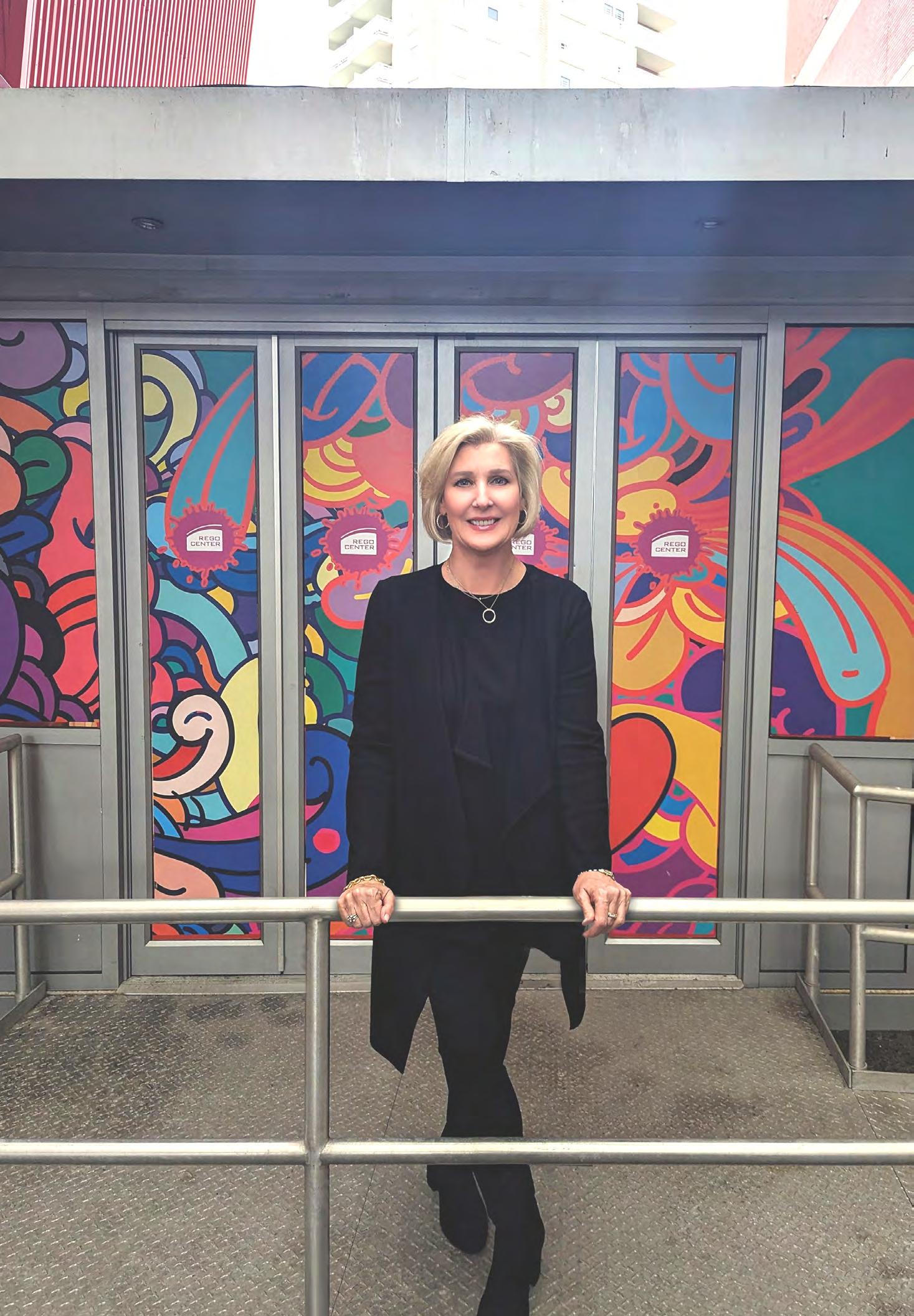
International Retail Magazine talks Outlet Centers with Mover and Shaper, Lisa Wagner of The Outlet Resource Group.
Though it’s been around in one shape or another for many years, the outlet center sector really came on the radar post-Covid 19 pandemic.
Why? What makes the outlet center different? What makes them so attractive to the consumer? Where did they come from and where are they going?
To learn more, Shannon Quilty and Linda Johansen-James of International Retail Magazine sat down with Lisa Wagner, Principal of The Outlet Resource Group (TORG), an industry Shaper, to learn how she became an outlet expert, gained international development experience and how she envisions the future of the asset class.
Shannon Quilty: SQ: You received your degree in journalism from Penn State. Tell us how you found yourself in retail real estate. Lisa Wagner: LW: Actually, I was an advertising major in the School of Journalism at Penn State. Frankly, it has been greatly beneficial because I learned to write properly and verbally express myself. We went through a lot of training in writing and public speaking, which is enormously important for anyone in business. I was one of the lucky ones who graduated and was immediately hired into a job in my field.
I found myself a little baby account executive working on the McDonald's account for an ad agency. I was plunked into the heart of retail. I say that because essentially McDonald’s are a fantastic retailer. It was fantastic training and exposure. That ended up casting me as a retail specialist.
I went from McDonald's to Hardee's to a couple of department stores, including Sears, and later a couple of malls. One day a woman approached our agency with an idea for a new retail real estate company in a category no one had ever heard of before called Designer Outlet Centers. That woman was Cheryl McArthur, currently Vice Chairperson of McArthurGlen. She needed a logo, branding and so forth for this new endeavor.
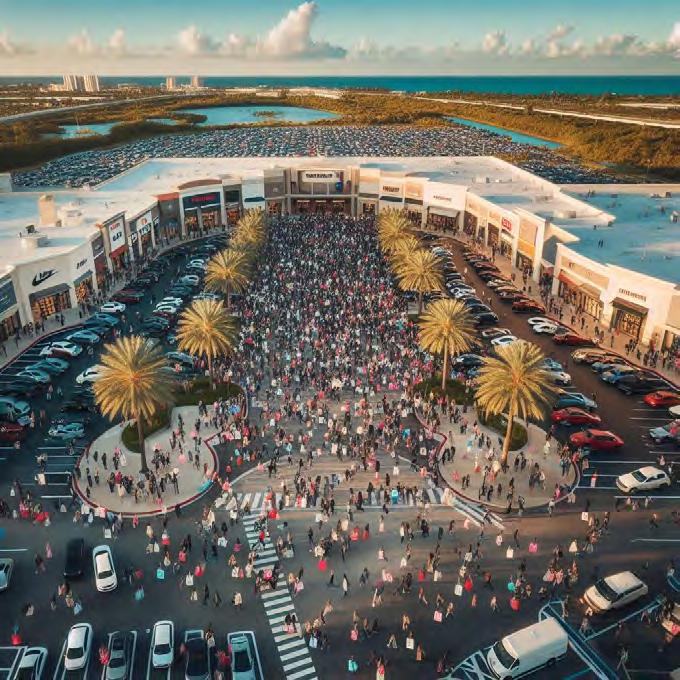
As the retail person, I was assigned to work on it.
She and I developed a nice rapport, and she ultimately convinced me to work with her as the Head of Marketing in this nascent business. I thought I’d do it for a year or so to learn the client side and that was 35 years ago! It was a wild ride – in 4-1/2 years we opened 21 outlet centers all over the country. That was before email, before cell phones - it was airplanes and FedEx and couriers. It was insane. But we did it and then we went public, a fascinating process I was excited to be a part of.
During the time that we were going public, several of our major tenants expressed the desire to open outlets in Europe. Partnering with Joey Kempfer in the UK, McArthurGlen asked me to move over to McArthurGlen Europe. I absolutely loved the challenge of educating the population and the brands. They didn't understand the difference between Outlet Centers
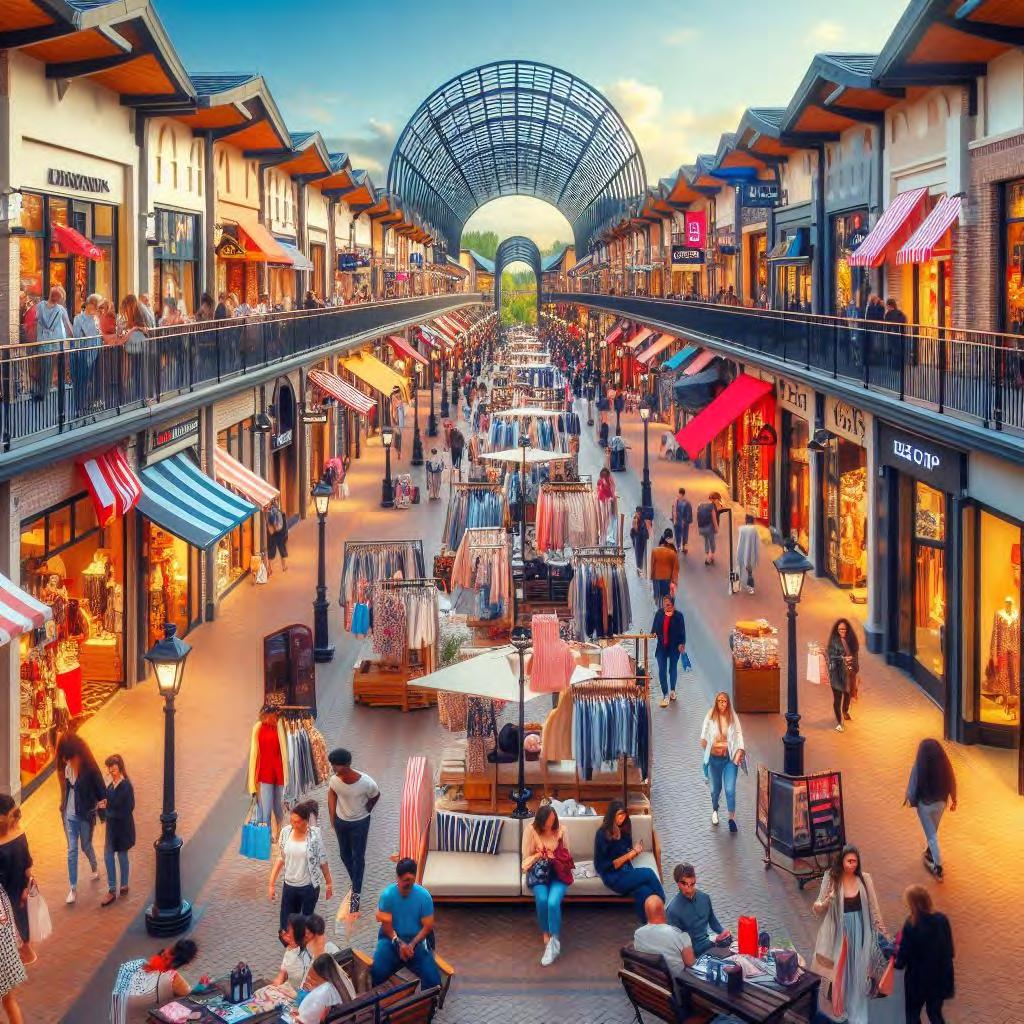
and Discount Centers. We started at the beginning, explaining to brands what this channel can do. We broke ground for the first outlet center, Cheshire Oaks, in September of 1994, and then we were off to the races. I remained with McArthurGlen for several years before moving to Outlet Centers International, another start-up, where we focused on development in Germany and the Nordics.
Finally, my partners and I started The Outlet Resource Group (TORG). As TORG, we have one foot in the US and another in Europe. I've always kept a hand in international. Once I got into it, I never really left.
Linda Johansen-James: LJJ: From my experience of the outlet industry, Europe is way ahead of the US.
LW: We're not as bare bones as we were when we started, but we haven't really progressed in the US. Design is still quite simple, very unadorned.

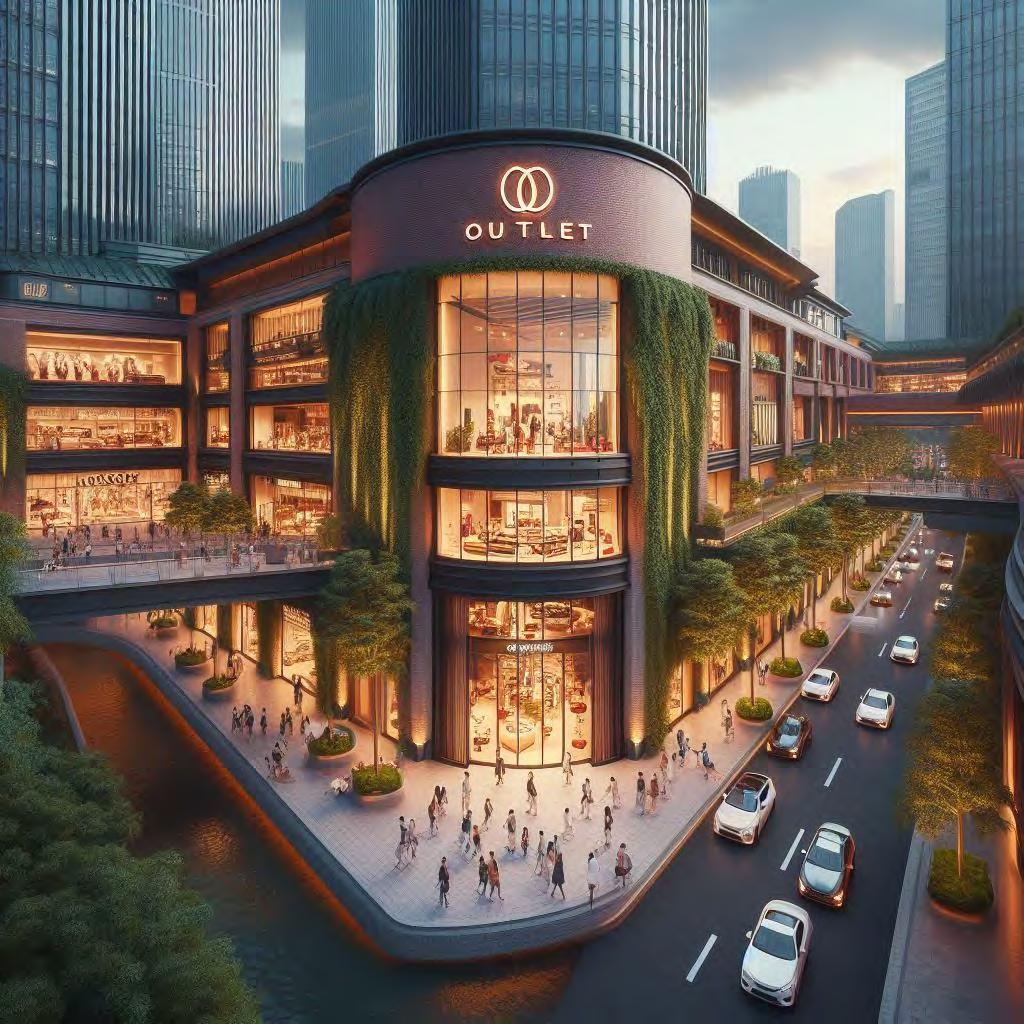
The brand mixes are fine, but Europe took it to another level. There's still an opportunity to take the US forward.
For example, Bicester Village Company, formerly Value Retail, are working on a project in New York. It will be groundbreaking if they pull it off. Many of us are cheering for them because if they are successful in developing a Bicester Village style center in New York, it will usher in the possibility to do a handful of similar projects in gateway cities in the US. That is nothing but good news for the industry.
LJJ: For me outlets always meant discounts - selling stuff that didn’t sell in the main retail store. How did brands, luxury brands in particular, come to understand that outlet locations were about something more than discounting unwanted goods?
LW: Outlets started as a means of clearing the channel. It was a distribution mechanism for unsold
goods, last season's goods and so forth. What became quickly apparent was that consumers were really attracted to the concept. However, having only broken assortments, which is necessarily the case with excess goods, we were seeing customers leave empty handed because they weren't finding their size, their color, their preference. Larry Phillips, who was the head of Phillips Van Heusen many years ago, was a great advocate for the industry. He realized early on that if they could find a way to produce a baseline of goods with something for everyone – style, color, size - at a fair price, they would avoid customer disappointment due to unmet demands. Additionally, it would keep their factories operating at full capacity, making them much more efficient. The cost per good across the entire production line was better, making their costs going into wholesale more advantageous.
They were really the first to lead the charge in producing goods specifically for the outlets. What we call MFO, or Made for Outlet, is not an inferior product. It is deliberate production providing a base of product in every store that meets the needs of the customer. Many of the brands do this and do it extremely well. For example, in the case of Polo Ralph Lauren, a significant percentage of merchandise in the store is made for outlet, but it’s not inferior. It is an additional product designated for the outlets made to keep the production lines working optimally and give the customer the brand they want at a reasonable price. Every so often Consumer Reports decides to evaluate the outlet industry. They always end up concluding it's a fair price for the goods being produced. It is not disingenuous on the part of the brands. It comes from the brand, it is branded, and it is quality reflective of the value of the good.
An added benefit of the outlet industry is that it's a gateway to the brand for many customers. The Kellogg Graduate School at Northwestern did a study roughly over 10 years, 100,000 people and determined something like 34% of consumers who were introduced to a brand through the outlet channel end up buying the brand later at full price. Because they've been introduced to the brand through the less intimidating outlet format, the customer is converted. I’m not saying that they've left the outlet channel behind, but they will purchase at full price.
That’s a great way for brands to market themselves to a new consumer base and has led to the adoption of the outlet channel by a wide range of brands.
Again, outlets are not just excess goods, it's a full complement in most stores. Brands are so good at production now they really don't have much excess goods. To have goods to populate the outlets, they really need to intentionally over produce.
SQ: At one point there were retailers who were only in outlet malls. For example, Big Dog comes to mind. You wouldn’t find them anywhere else, but you would find them in every outlet center.
LW: They were a phenomenon of the 1990s and early 2000s and long gone. I'm trying to think quickly if there are any of those models left but can't. What's interesting now and I think incredibly exciting for the industry, is that we're starting to see a lot of direct-to-consumer brands and e-commerce brands opening in outlets. They are also opening in full price projects, but many of them are coming to the outlets because that's where the traffic is. Post COVID, we rebounded with much greater strength than most full price retail. Many Direct To Consumer, or DTC brands, are choosing outlet centers because the e-commerce space is difficult. It's extremely expensive and a very crowded space. It's almost a marketing exercise to open a brick-and-mortar store and as I said, there's a huge conversion.

of goods are returned which is having an impact on costs and challenging the whole category. So, outlets are incredibly attractive.
SQ: I was reading the article you wrote in Across Magazine where you talk about how the outlet center has changed and adapted over time. You said that the outlets are good in good times and great in terrible times.
LW: That's a Steven B. Tanger quote originally, I think, but it’s been co-opted now. Yes, outlets are good in good times and they're great in tough times.
SQ: The other thing I found interesting in this March 2020 Across Magazine article, is your mention of two categoriesAdapters who respond to the changes and Shapers who assess the situation and model their own path toward survival. You advocated for Shapers’ ability to triumph and posited that we would come into another golden age of outlet development and expansion. Considering this was published at the beginning of the
Covid pandemic, how do you feel about that? Do you feel like you've seen that play out?
LW: I do. It was a huge gamble to make those predictions. I was crossing my fingers and toes that we would come out of COVID with the strength we showed coming out of other crises like 2008. I've been through a few recessions and economic upheavals in this industry, and we have always come out stronger than we went in. Thank goodness it proved to be correct! The industry did come out of COVID stronger for a few reasons. Typically, there's a flight to value whenever there's crisis. Certainly, inflation and economic stressors around the world are causing consumers to go in two different directions. The rich get richer, so luxury is doing very well. For the largest segment of the population, value is key. They're feeling more pressure and fear of economic stress. So, you're bookending with luxury on one side and flagship locations doing very well and on the other side, value. Outlets really play to both because we can satisfy the demand for luxury in a value concept, particularly in the European centers. What is going to be interesting is how this plays out. We are seeing a gold rush in terms of consumers coming to outlets and the transactions that are occurring. The business is strong in existing centers.
What is yet to be played out is what’s the development appetite?
There appears to be a keen appetite for development, but the current high cost of capital is dampening it a little bit. It’s not easy putting together the capital for a new development. Having said that, there are markets in which capital costs are not as much of a factor. We’re seeing huge interest in Saudi Arabia, where there's a lot more flexibility on the cost of capital.
What’s also interesting is we're seeing a more creative approach. We're going to be seeing more adaptive reuse of malls and retail developments. VIA Outlets comes to mind as a group that’s done an excellent job of creatively redeveloping underperforming outlet centers. It takes vision and patient capital to do that, and they have a good capital partner. I think we'll see more now because they've proven how well it can work. We haven't seen as much in the US, but I think it will come. Tanger is doing some creative things, and we will see more from them. We’re going to see a lot more creativity from them. They'll be raising the bar. I'm very happy to see some good risk takers. Risk is always moderated in public companies but there's some brave and appropriate moves being undertaken. Hopefully, we'll see more of that in the US.
As I said, I think it's very badly needed. The cost of capital is a challenge but there are some companies planning and seeking to undertake some interesting moves. The industry has proven itself so now it’s a matter of time.
It will be up to the Shapers to take advantage of the market forces that exist to craft and curate centers that appeal to not only today's customer but the customer of the future.
The up-and-coming Gen Z is a really active shopper in brick-and-mortar, but they have a lot of expectations. If we can meet and exceed their expectations now, it will benefit us as they grow and start looking at settling down, creating their life spaces, and families. That's going to require us to step up our game. Those that do will really be the winners. Shapers are going to create the next generation of successful centers.
SQ: Tell us about TORG and how you work. What is your business model, your mission?
LW: We’re really a collective I would say. We've recently parted from our private equity group in the US so I'm now a completely free agent in terms of who we can work with and how we can work with them. We do development consultation, asset management, and a bit of everything else. Our flexibility allows us to morph to what the client needs. We slot into an existing team or create a team. Meanwhile, our European group has been moving along now for quite a while. They do primarily development consultation on a number of projects. They are working on the first outlet center in Tblisi, Georgia, which will open next year.

It’s a beautiful project that's been several years in the works.
It is emblematic of opening in an emerging market. Many of the brands are opening their very first stores so their initial presence in the market is through the outlet. It has a nice complement of food and beverage. It's a really nice project and something the team has poured their hearts and souls into for the last few years.
They're working on another in Malmo, Sweden which is a great market. There's one in the UK in development. That's probably one of the last centers that will be open in the UK. They're working on one in Germany as well. Germany will not have many more outlets because there's an anti-greenfield development attitude. As challenging as that is, it is prompting some creative approaches to adaptive reuse by some developers.

Currently, I'm working with an American fund, with strong European presence who are looking to acquire and put together a portfolio of centers. We're actively working on that which then we will asset manage with operating partners. Most of our outlet work is international with a focus on development consultation, asset management, added value, etc.
In the US, we're working more on advising on mixed-use development because there really isn't any new development in the US. We're kind of waiting to see what happens with the next stage. Hopefully, a new era is coming in the US but right now it's a bit static.
I think of us as an outlet SWAT team but not limited to outlet retail. Frankly, outlets are a lot harder than traditional retail because outlets must be marketed day in and day out. The leasing and rent structures are more complex. Traditional retail is much more straightforward.
LJJ: That's a good point to make Lisa, that working in outlets is different. I recently did an outlet lease, and it was a beast. It took months to negotiate because of all the nuances. You must be prepared.
LW: Not for the faint of heart.
LJJ: There's not a lot of women in the industry, why is it that, do you think?
LW: Well, that's an interesting subject that came up in an industry session I did recently. It prompted me to do a little quick count. I've worked on almost 70 outlet centers in my career and only in 2 did I report to a woman. Think about that. Retail real estate is very male dominated.
When I started in the industry, many of the brand representatives came from the warehouse and distribution division. They were all men. That changed over time. In my experience in our industry, men tend to hire men. It has been an industry that adopted women on the late side.
Also, I find Gen Z women, those who would be the managers and executives coming up, don't necessarily want it. It doesn't seem to be an attractive industry to a lot of women. It's very male and the investment side tends to be male.
I appreciate companies who do seek out women to fill their ranks - who hire and promote women. I think it is demonstrative of their vision to be more inclusive and there are companies that have taken that approach. I've been lucky enough to work around some of them. We need to make this industry more hospitable to younger women.
Unfortunately, when you go to ICSC (formerly known as The International Council of Shopping Centers), and the other big shows, the women who are there, the younger women in particular, tend to be on display. I think that makes it rather unappealing to women with professional aspirations. I would love to see more mentoring of women earlier in their careers and not putting them on display in front of booths. And I don't mind being quoted on that piece.
LJJ: Where do you see the future of outlets going? What needs to be implemented or to change to make outlets not just known for discounts but high-end value retail.
LW: I think we're going where the customer is taking us if we're smart and that is a more refined experience for the customer that has things like loyalty mechanisms. People have been so conditioned to receive rewards, whether it's their airline of choice, their hotel of choice, their Starbucks, they expect every expenditure to be rewarded with points or dollars or something. We need to be cognizant of that. It also benefits us because we engage with the customer.
We're able to acquire data about that customer, understand them better and as a result be able to market to them more efficiently. It is definitely a two-way street. We must grow more comfortable with data mining and analysis as an industry to be more efficient in our communication and our engagement. We've got to be more thoughtful in the way we curate the onsite experience. Placemaking, wayfinding, all those buzzwords, are appropriate. We need to commit more to that as an industry.
The industry was always a partnership between the retailer, the tenant and the landlord because of the nature of overage rent, of percentage rent as a calculation of our return. We need to get even more involved in each other's business, if you will, by sharing data and being much more partnered in our commitment to the consumer. There are forces demanding that, such as, security. We must be more aware of providing a secure environment which impacts everyone - the tenant, the consumer, and the landlord. We must come together in a much more meaningful way in every aspect. The developers or investors behind the centers who are committed to creating the next generation of centers, that's the category that's ultimately going to win. Those trying to stick to the status quo, who keep cutting and lessening the experience, they’re ultimately going to lose because the consumer isn't going to stand for that.
We've seen example after example of that. It is better for the asset if that group exit and let someone more committed to long term success take it over.
SQ: We're slow adapters as an industry. In the current environment, you must have your eye on the long game, I think, building relationships that go beyond the transactional with all your stakeholders.
LW: Exactly. In the US we have not embraced ESG (Environment, Social and Corporate Governance). We will get left behind if we don't focus on those core issues of environment, society, community - it’s essential. The generation coming up represents 30% of the spending within the next 7-10 years. They will be evaluating where they spend that money based on these sorts of criteria. We must commit to understanding how they think and what motivates them. We cannot put our heads in the sand.
Being of an older generation is no excuse. You must adapt to survive.
As you said, our industry isn't known for adopting new things very quickly, but these things are not even that new anymore. You don't have to be on the bleeding edge, but you have to be on the cutting edge, you know?
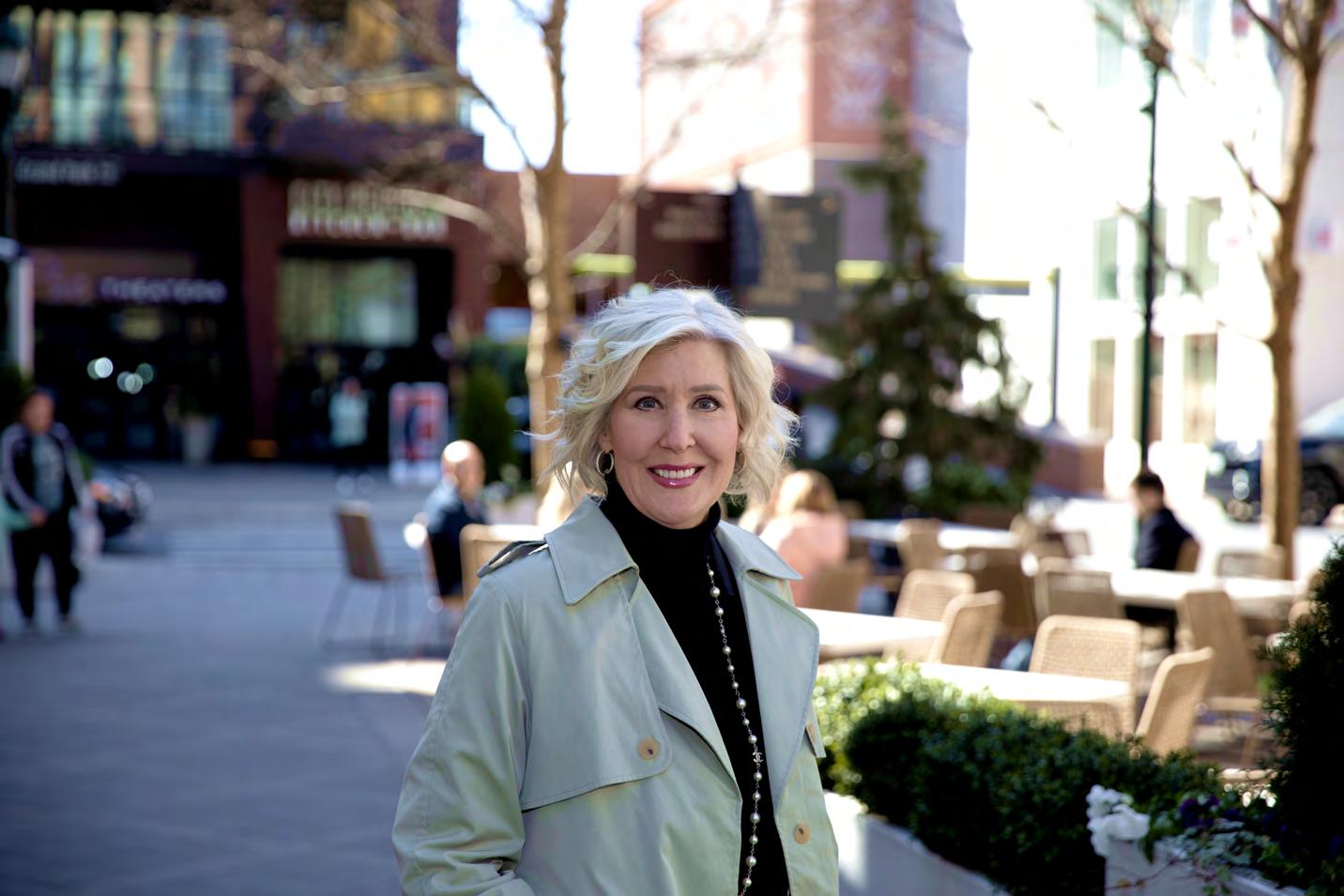
SQ: At least be on the knife.
LW: You just must be, or you get left behind.


Throughout my 25-year career in commercial real estate
I have witnessed firsthand the transformative power of retail innovation driven by changes in consumer preferences, shopping behavior and technological advancements. Municipalities across the globe are embracing their homegrown entrepreneurial spirit by launching retail start-up programs or incubators. These initiatives, spearheaded by collaborations between forward thinking local governments, property owners and business associations,
are playing a crucial role in nurturing the next generation of retail entrepreneurs. By providing a supportive ecosystem, cities are not only fueling economic growth but also ensuring that the retail sector remains vibrant, diverse and responsive to the needs of 21st Century consumers.
One of the primary advantages of these programs is their ability to bridge the gap between aspiring entrepreneurs and established industry leaders. Through mentorship opportunities, workshops and networking events, fledgling retail businesses gain invaluable insights from seasoned professionals. The cross-pollination of ideas and experiences is a win-win scenario, as it allows established retailers to stay attuned to emerging trends while fostering an environment conducive to innovation.
“Vacant to Vibrant” in San Francisco is a retail incubation program, launched in 2023, that unites local property owners to transform vacant storefronts into vibrant community spaces. Spearheaded by SF New Deal and the City of San Francisco, this initiative brings together small businesses, artists, entrepreneurs, and cultural organizations to invigorate empty commercial spaces. Retail spaces are offered at low-cost to help businesses test a physical environment for short-term or pop-up uses.
Whether the space be used for a pop-up store, art gallery or a workshop, the program activates empty properties in downtown San Francisco, re-energizing neighborhoods and fostering economic growth. The program has successfully launched 17 new pop-up shops, creating engaging spaces in the Financial District. Nearly half of the inaugural businesses have extended their term after the initial 3-month test.

Another successful program is Chicago’s “Small Business Storefront Activation Program.” The program was initiated in response to the COVID-19 pandemic, which decimated commercial corridors across the city. Many brick-andmortar businesses, reliant on foot traffic, suffered due to reduced economic activity.
To address this, 15 community and economic development organizations received grants as part of the program.
Their mission? Activate vacant storefronts by transforming them into vibrant business spaces. These organizations collaborate with small business owners and landlords, negotiating leases, sourcing businesses, and managing operations. The ultimate goal is to boost local spending and attract foot traffic to major commercial areas throughout the city.
Retail incubation programs play a pivotal role in shaping vibrant urban landscapes. These initiatives foster entrepreneurship, economic growth, and community vitality. Cities across the globe provide an incredible launching pad for the next generation of retail entrepreneurs.
By nurturing local talent, revitalizing neighborhoods and offering a diverse and innovative platform to grow, retail incubation programs are the seeds that sprout thriving cityscapes, fostering resilience and prosperity.

Fair warning, this will get weird before it makes any sense.
Retail brokers are matchmakers, but they’re also facilitators, advisors, researchers, and ultimately entrepreneurs. At their core, each has decided to stake their financial future on the uncertainty of a pipeline, their intense “hustle,” some primal instincts, and ultimately, a founded or unfounded faith in themselves.
As a former Philosophy student (I do have a degree in it), it occurs to me that this idea, that the individual must forcefully shape one’s surroundings or shape oneself into those surroundings by a pure force of will, is essentially what brokers do every day. Nietzsche posited a concept called “Will to Power” - it seems applicable to my Pivot.
Trust me, I’m onto something with this philosophy idea, so bear with me.
For the first 25-years of my real estate career, I focused on serving the interests of occupiers of retail real estate or the owners of those same properties. It’s been a great job, meeting new people and learning about a myriad of retail conceptsdo deals and you make money.
You get the concept. We learn about markets and retail concepts deeply and profoundly and express those lessons to clients who require immense amounts of information to make important decisions. I’m the one who tells the bad jokes. I get excited and I fall in love with the entire process. Meanwhile, I make a living. Win-Win!
I’ve been lucky enough to have some of the best retail brands retain me for my passion, patience and some just because I’m fun to be around. But during those first 25-years, I always worked for someone else.
Yes, I always “worked” for my clients, but the service journey was never complete. Truth is, I’d yet to commit to the ultimate expression of service - becoming a small business owner. Nietzsche goes on to say that sublimating the Will to a creative process was the goal, not just bending the world to my meager might. Making the leap away from the security of the larger company to start this firm, Kirsch Agency, has taken a great deal of thought and belief in myself and my team. I won’t lie, it’s equal parts exciting and scary. That said, working tirelessly for those who have faith in me feels like the right expression of becoming a better self.
Servant Leadership is a beat-up cliche, so I won’t go there, but the idea of reaching in every direction to exert a positive influence on yourself and others should be at everyone’s core. The Servant Leader sublimates their own ego to benefit even more people around them and in so doing, becomes a better person.
As Kirsch Agency takes its baby steps in Chicago, I can already sense that the creative process of hanging my own shingle will benefit my clients. Those who have the faith to join the enterprise will have a better version of me with whom to collaborate.


